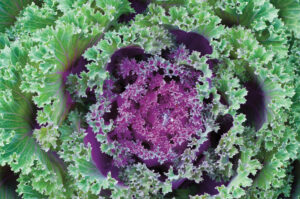The Long Winter's Nap: Putting your Flower Beds to Bed

 The grand finale of the gardening season is upon us. Now is the time to prepare your yard for its long winter’s nap, if you haven’t already—prepping it for the coming spring. A little bit of work now will mean happier beds come next April. Just like spring, when beds slowly come to life, they slowly go dormant in the fall, so putting your beds to bed is a process that happens over time, not just in one day.
The grand finale of the gardening season is upon us. Now is the time to prepare your yard for its long winter’s nap, if you haven’t already—prepping it for the coming spring. A little bit of work now will mean happier beds come next April. Just like spring, when beds slowly come to life, they slowly go dormant in the fall, so putting your beds to bed is a process that happens over time, not just in one day.
Some perennials hold up beautifully over the winter—sedum, pinks (otherwise known as dianthus), and ornamental grasses either hold their green or at least remain showy enough to warrant you leaving them until spring. Perennials such as coneflowers and black-eyed Susans might not look as pleasing, but provide seed for birds throughout the winter and are worth leaving until spring. Some perennials however, require cutting back in the fall, particularly those that grow mildew (like bee balm) or just look so unsightly you wonder why you planted them in the first place (day lilies, columbine, peonies). Resist the urge to prune any of your bushes though; the act of pruning stimulates new growth. And when that happens in the late fall, as the plant is trying to go dormant, it can lead to confusion for the plant and can kill it—or at the very least, will result in no blooms the following spring. With early spring-blooming woody plants, it is best to prune them just after blooming to ensure new growth and a happy plant. A good rule of thumb to follow is, “if it’s yellow or brown, cut it down; if it’s green, leave it alone.”
 Now is a fantastic time to clean up around plants that show disease, but don’t throw their leaves into the compost bin. You’ll want to bag them and dispose of them otherwise to keep them from infecting other plants, as well as from continuing to infect the initial plant. It’s also a good time to mulch around the roots of plants to help protect them from the coming bitter-cold weather; sometime between the first frost and before it gets too cold is best (mid-November is a great time in our area for this task—so get on it!).
Now is a fantastic time to clean up around plants that show disease, but don’t throw their leaves into the compost bin. You’ll want to bag them and dispose of them otherwise to keep them from infecting other plants, as well as from continuing to infect the initial plant. It’s also a good time to mulch around the roots of plants to help protect them from the coming bitter-cold weather; sometime between the first frost and before it gets too cold is best (mid-November is a great time in our area for this task—so get on it!).
While spring is thought of as the time to plant, fall is also a great time for that activity. Spring-blooming bulbs need a period of cold dormancy in order to bloom come spring. To keep squirrels from digging up and feasting on your bulbs, outwit them by planting the bulbs in large groups. Flood the soil surface with water, then cover the area with leaves and some shrubby branches. Planting pansies in the fall gives you fall color; mulch them after the ground freezes to protect the roots from the freeze-and-thaw cycle of winter and they will bloom again in early spring! Many trees and shrubs do well when planted in the fall—the weather is cool, but the soil is still fairly warm, allowing the roots to establish themselves before the depths of winter. Just remember to keep them watered until they go into dormancy for the season. Fall is also a good time to split early spring-blooming perennials, such as iris or hosta, creating a happier bed for them to winter in.
 This is also a great time of year to prep that new bed you’ve been considering adding. Cover your selected area with thick newspapers and mulch. Come spring, you’ll have an area ready to be amended with little effort! Now is also a great time to get your soil tested; labs aren’t as busy, so you’ll get your results quicker, giving you the time to amend soil now and giving it time over the winter to settle. If you’ve been considering starting a compost bin, this is a good time to get started. Those falling leaves from your shade trees can be placed in the bin and will be ready to use in next summer’s garden. If a compost bin isn’t your thing, you can still place leaves in plastic bags, setting them aside for the winter, where they will break down and become next spring and summer’s organic matter to be added to your beds. In yet another use for nature’s gold (also known as those falling leaves), considering mowing them over with your lawn mower and allowing them to sit on your lawn. Keeping the leaves whole can create dead spots, but the act of making them smaller by mowing over them helps speed the process of them breaking down and becoming organic matter, saving you the time and expense of fertilizing—one more thing knocked off your gardening to-do list!
This is also a great time of year to prep that new bed you’ve been considering adding. Cover your selected area with thick newspapers and mulch. Come spring, you’ll have an area ready to be amended with little effort! Now is also a great time to get your soil tested; labs aren’t as busy, so you’ll get your results quicker, giving you the time to amend soil now and giving it time over the winter to settle. If you’ve been considering starting a compost bin, this is a good time to get started. Those falling leaves from your shade trees can be placed in the bin and will be ready to use in next summer’s garden. If a compost bin isn’t your thing, you can still place leaves in plastic bags, setting them aside for the winter, where they will break down and become next spring and summer’s organic matter to be added to your beds. In yet another use for nature’s gold (also known as those falling leaves), considering mowing them over with your lawn mower and allowing them to sit on your lawn. Keeping the leaves whole can create dead spots, but the act of making them smaller by mowing over them helps speed the process of them breaking down and becoming organic matter, saving you the time and expense of fertilizing—one more thing knocked off your gardening to-do list!
If you have a vegetable garden you’ll want to pull your plants. Some greens, like collards and kale, as well as root vegetables like carrots and parsnips will hold up well—even taste better in the frosty weather—but you’ll want to pull tomatoes, squash and other warm-weather vegetables. While it might be a bit late this year, if we haven’t had too heavy of a frost yet, there is still a small window for planting a cover crop such as rye or clover that you can till into the garden come spring to help put nutrients back into the soil. Herbs such as sage, rosemary, thyme, lavender and parsley generally can handle cold weather, but be sure to mulch around their base to protect the roots. Rosemary, however, does not like temperatures below about 15 degrees Fahrenheit, so if the temperatures take a deep plunge, you will want to take more extreme measures with your plant.
 Pull in flowerpots that can’t take a freeze, like terra cotta and plastic. Give all your pots a good cleaning before putting away for the season, so that come spring, they are ready for fresh plantings.
Pull in flowerpots that can’t take a freeze, like terra cotta and plastic. Give all your pots a good cleaning before putting away for the season, so that come spring, they are ready for fresh plantings.
Consider also your garden tools. Before putting them away for the year, give them a good cleaning. Scrub the dirt, debris and rust off your tools, oiling the metal to keep rust and corrosion at bay. This is a good time to sharpen blades of power tools, such as lawn mowers and weed whackers, changing air filters and spark plugs while draining their gas tanks. For hand tools, sand down any rough spots on the wooden handles and give them a coat of linseed oil to help them last.
All this work putting your beds to bed will pay off in dividends come next spring. Adding mulch protects your plants against some of the harshness of winter while amending your soil now gives it time for the improvements to take hold. Removing this year’s debris, while removing insect egg cases and disease spores also makes for a tidy view all winter. In my case, this may be the only time my garden looks so orderly.






